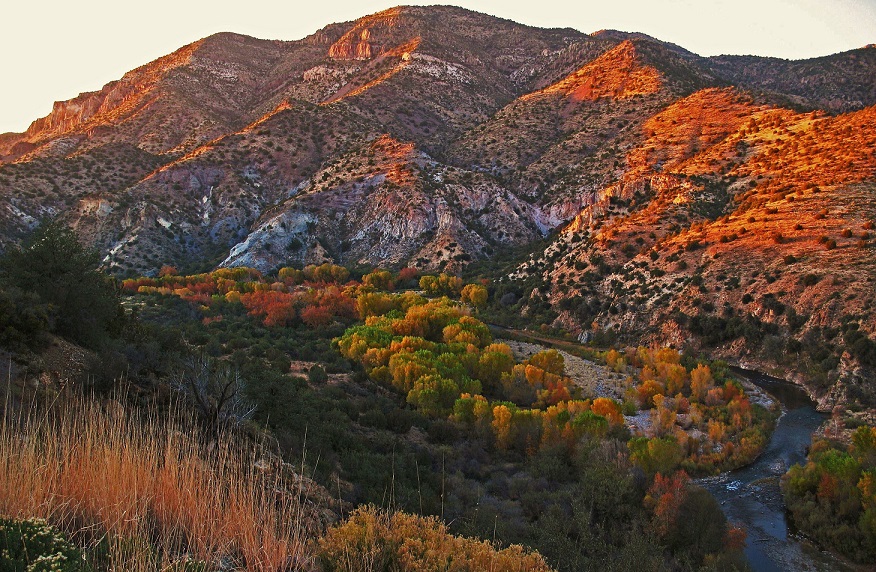On November 24, New Mexico’s Interstate Stream Commission voted to move forward with a project that would divert 14,000 acre-feet of water from the Gila River per year. Although the precise nature of such a project is still up in the air, it would likely involve a low-walled dam, pipelines and off-stream impoundments. Despite there being no demonstrated need for the water, no plans as to who would use the Gila’s water, and a recent study projecting debilitating impacts to the river’s ecology, the ill-advised project received a go ahead vote from the council.
Two weeks earlier on November 10, the Sierra Club’s Rio Grande Chapter and the Gila Conservation Coalition had gathered at the Stream Commission building to rally for the river and to protest the Commission’s unwillingness to take public comment. The Commission’s meetings had been held far from the affected communities, dissuading public comment, and several meetings’ public comments were left out of the minutes. This was significant, as public opinion in New Mexico is overwhelmingly against the development of the upper Gila, with 85 percent opposed to the diversion.
It seems unthinkable that water commissions would still be looking to divert the last remaining stretches of untamed rivers that remain. Yet, in the upper reaches of the Gila River, the last significant stretch of wild river in New Mexico, that is exactly what is being planned. Ever since settlers began farming past the 100th meridian, the policy for water in the American West has been shaped by property laws that viewed any water not used, diverted, held, or altered by human industry as water gone to waste. Considering this "use it or lose it" mentality, it is unsurprising that we would end up as we are today, with only one fourth of one percent of the river miles in the United States protected in their free-flowing state. The wild, undammed American river has become an endangered ecosystem.
“It proves the peak water theory,” says Allyson Siwik, Executive Director of the Gila Conservation Coalition and member of the Rio Grande Chapter’s executive committee, and participant in the November 10 rally, who notes that this project is attempting to siphon off the “last remaining drops, literally the last drops,” of free-flowing water in New Mexico.
The paradigm that all water must be used by people is a powerful one, and the 2004 Arizona Water Settlements Act offered New Mexico $128 million of federal dollars to “develop” their 14,000-acre-foot share. It seemed that the tempting prospect of federal subsidies, and the desire to not let Arizona use New Mexico’s water, was enough to override any practical notion of conservation.
Although attempts at damming the upper Gila have been proposed since 1910, the amount of water that would actually be available from the Gila is in a great deal of question. Counting evaporation losses, the useable volume of water could be as little as 5,000 acre-feet, and could go down to nothing in drought years. In addition, the estimated costs of building and maintaining the project range from seven hundred million to one billion dollars, far beyond the federal subsidy. This money would have to come from taxpayers and water users, causing water bills to multiply tenfold and making drinking water prohibitively expensive for low-income households.
“They are blind to facts and deaf to opposition,” Siwik says. “They’ve had their minds made up for ten years.”
However, this is no reason to give up, and the Sierra Club hasn’t. The project still faces many regulatory hurdles, including the Endangered Species Act, which protects several species of freshwater fish that are found almost exclusively in the Gila. The project may also prove to be so expensive that it cannot get financed.
Siwik urges those who care about the Gila, and the cost of tap water, to contact Governor Martinez and tell her to block the Gila diversion, and to urge her instead to grant funding to water conservation and infrastructure improvements in the state. “These [water conservation techniques] are 21st century methods to extend our water supply. We should not be going backward.”

